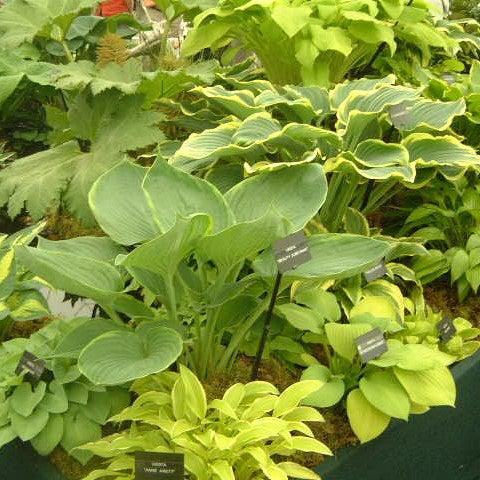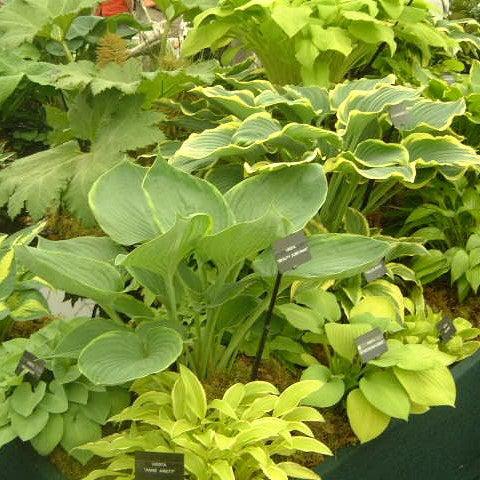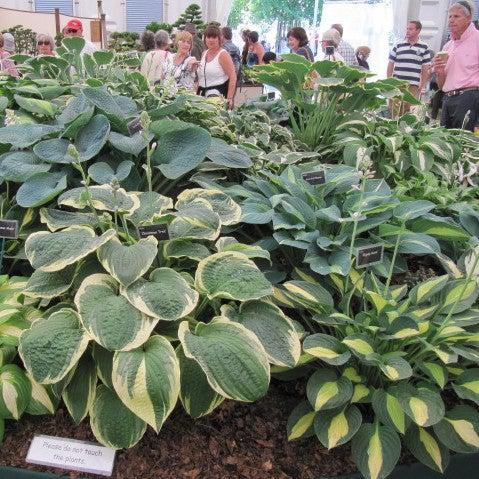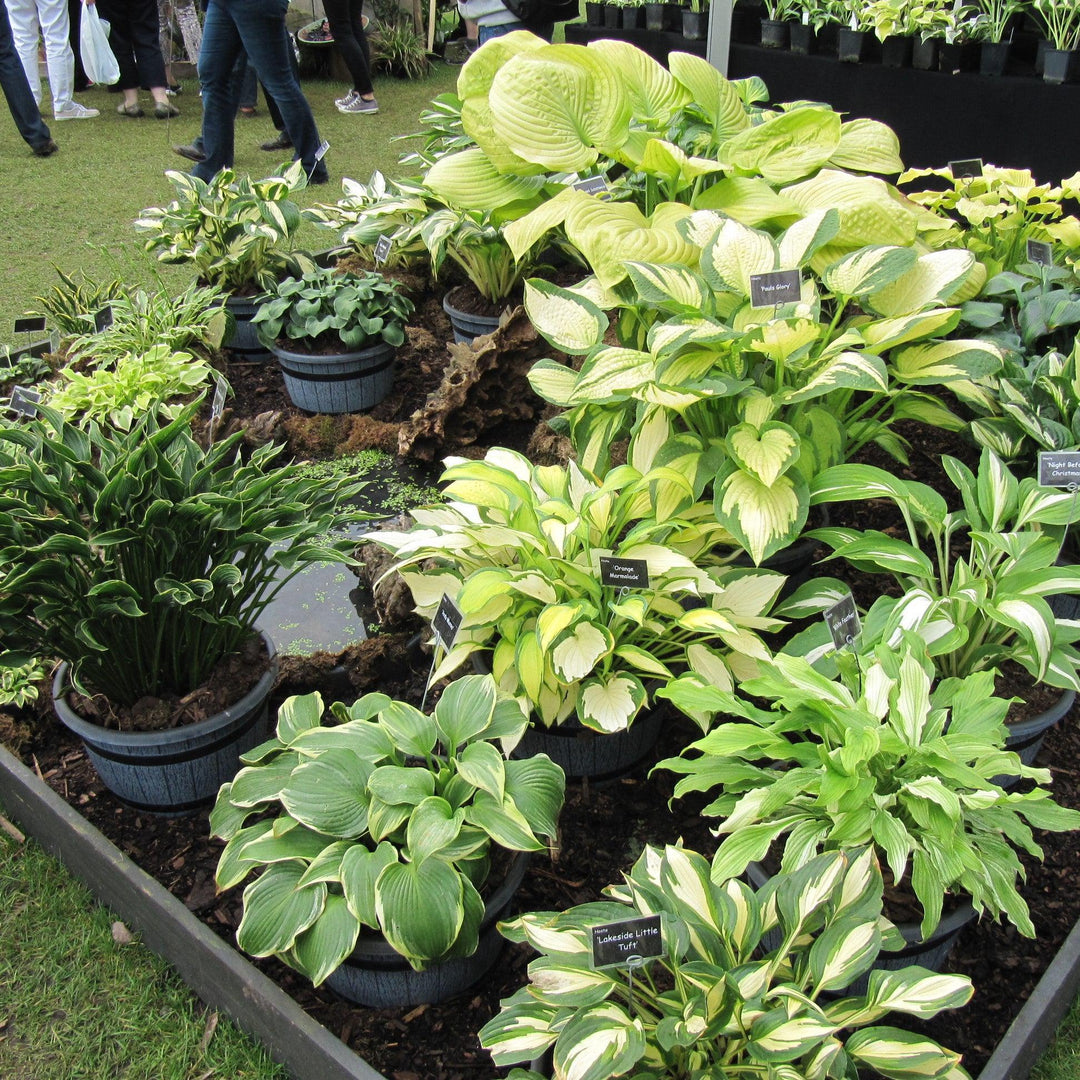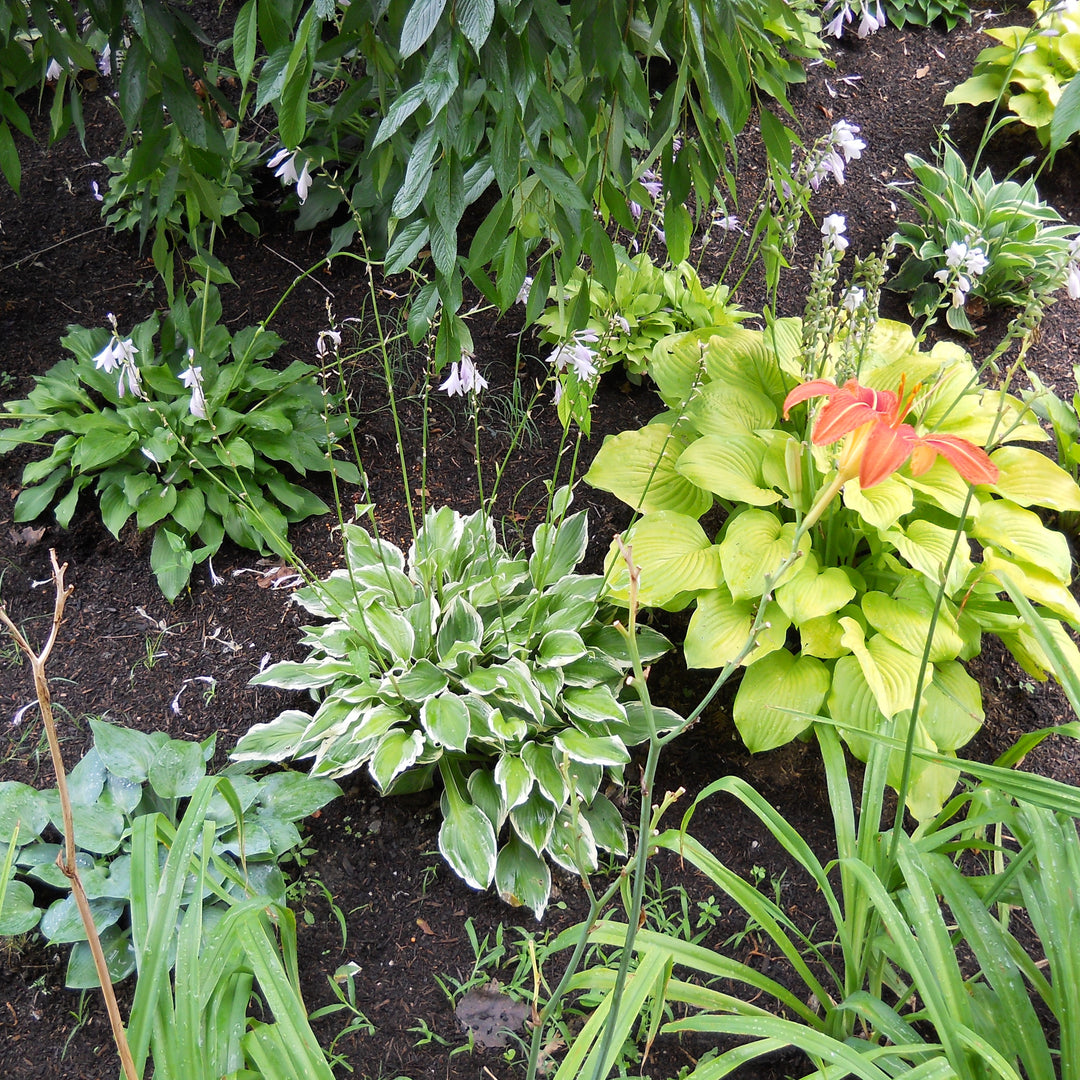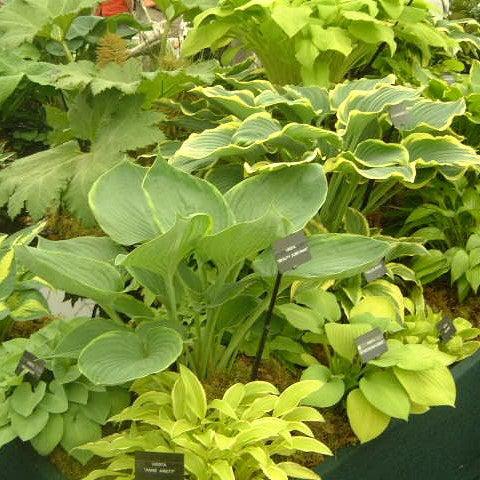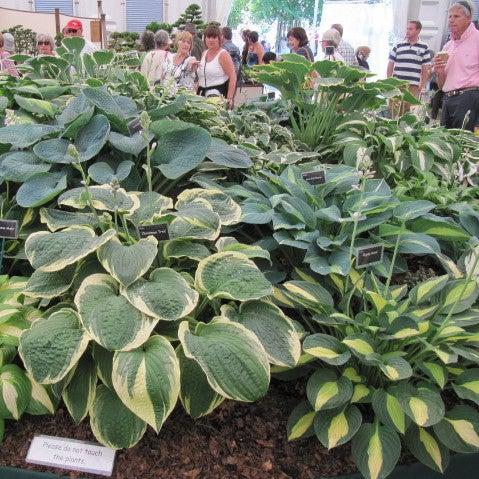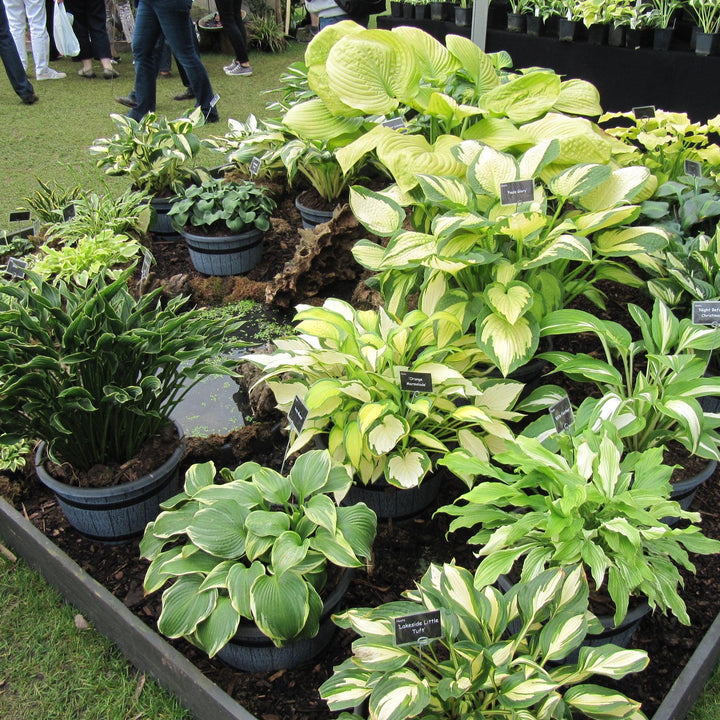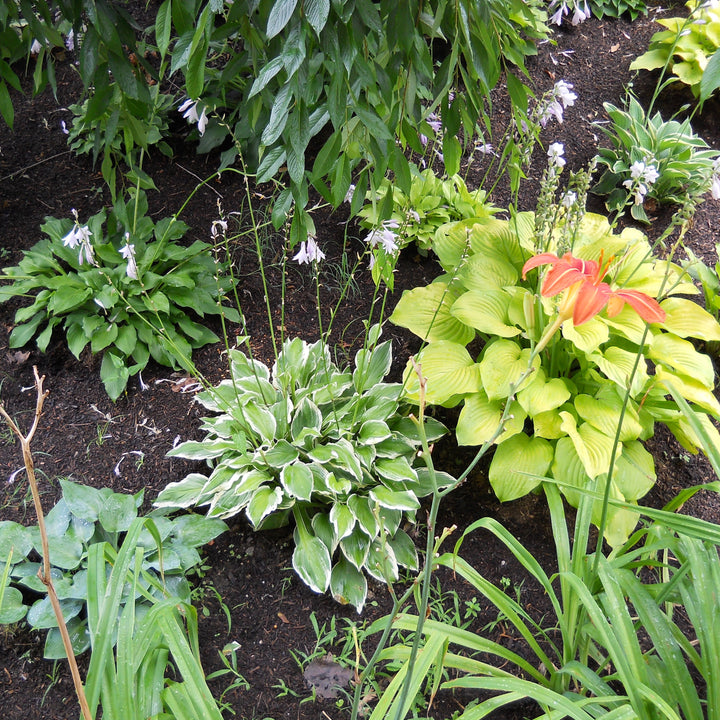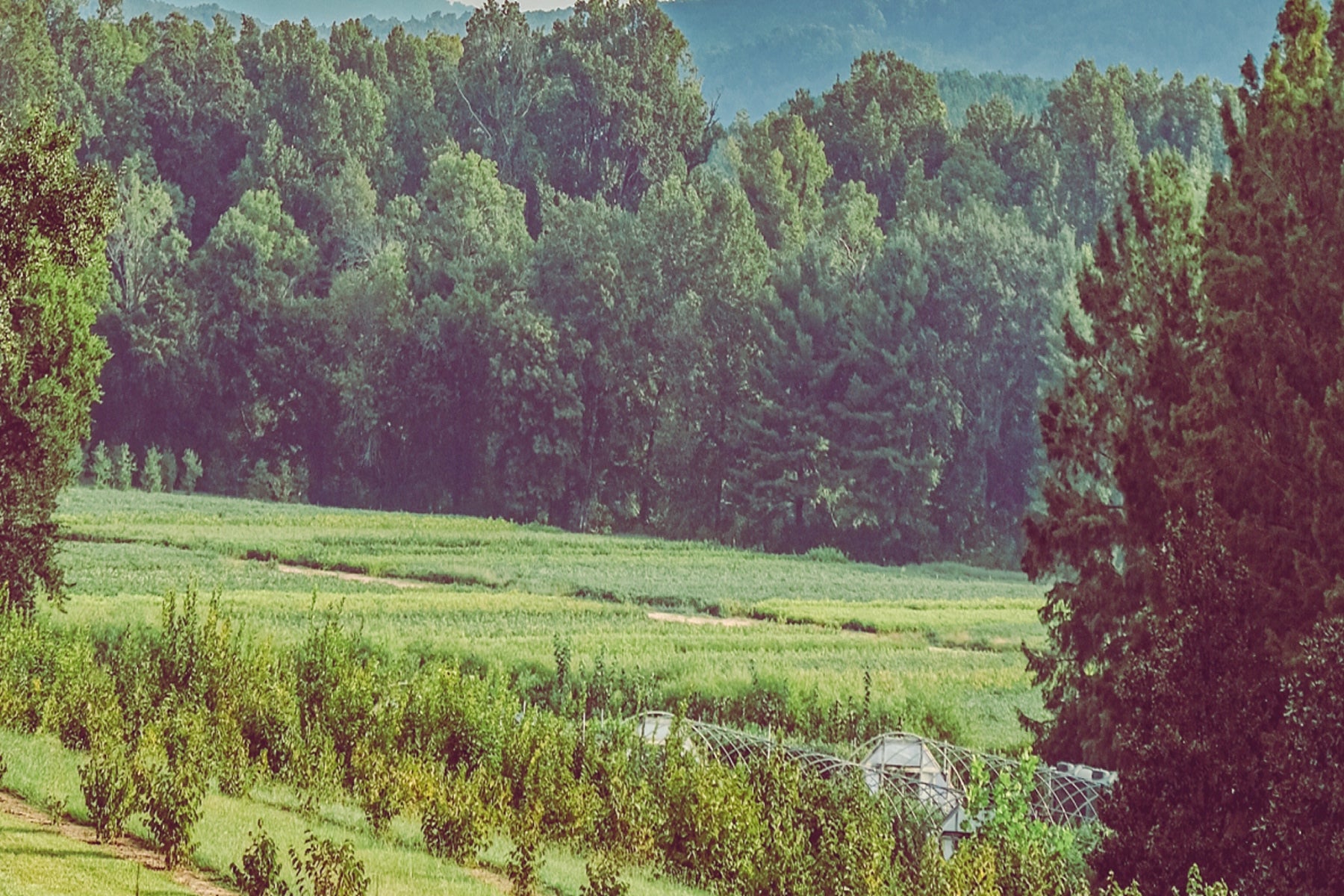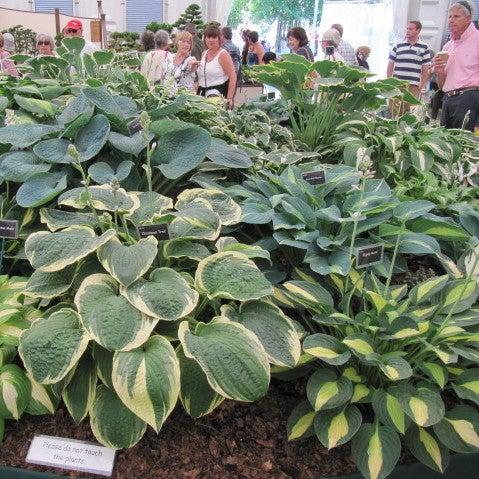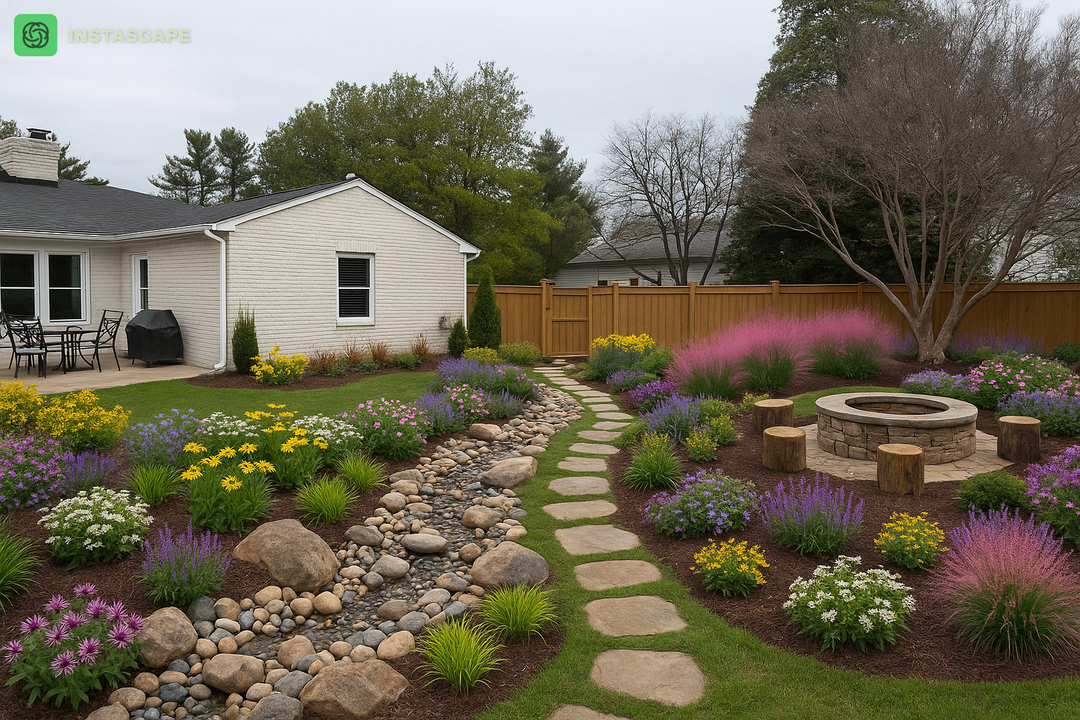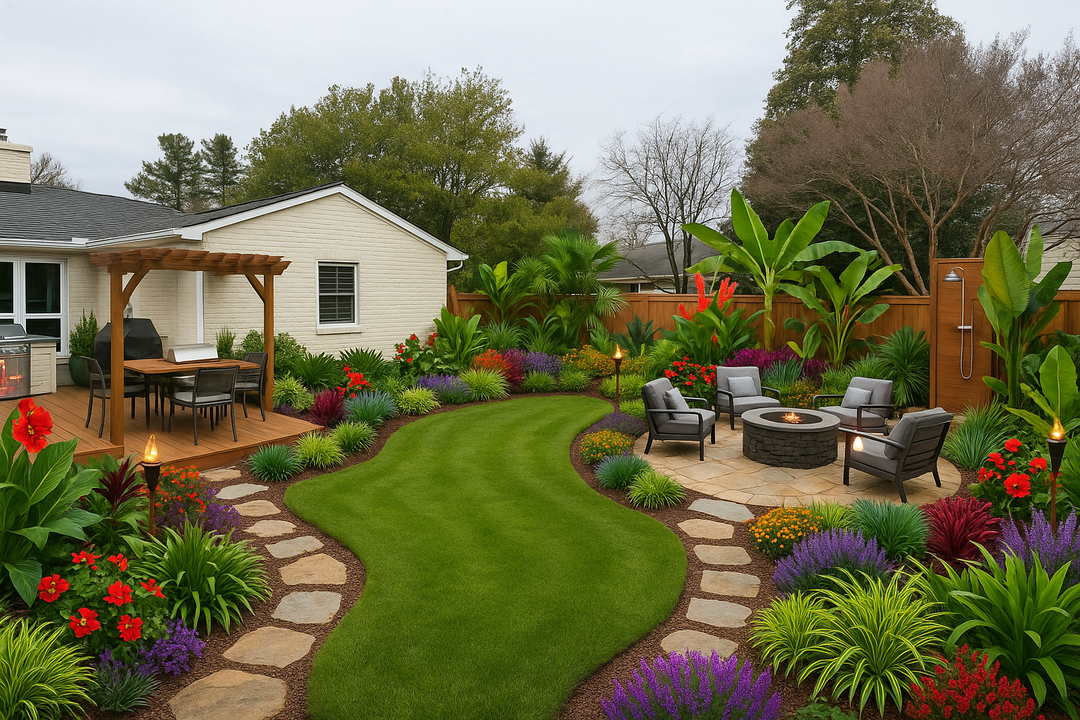Hosta is a genus of 70 species of shade-loving herbaceous perennial primarily grown for their foliage. The dense basal leaves are of various shapes and colors and deeply veined. Small bell-like flowers raise up in terminals from the rootstalk above the mound in late spring or summer attracting butterflies and pollinators. Best bloom in partial sun and moist well-drained soils.
|
Type: |
|
|
Height: |
1' - 3' |
|
Spread: |
1' - 5’ |
|
Spacing: |
3’ |
|
USDA Hardiness Zone: |
5 - 9 |
|
Culture: |
|
|
Bloom Color: |
Various |
|
Season of Interest: |
MAINTENANCE NEEDS: Low maintenance. Snails and slugs can cause severe problems if left unchecked. Foliar nematodes can cause interveinal browning. Plants infected with Hosta Virus X (HVX), tobacco rattle virus or tomato ring spot virus should be immediately removed from garden areas and destroyed. Otherwise, little to no problems.
LANDSCAPE USES: Accents or Group Plantings, Borders, Woodland Gardens, Naturalized Areas, Rock Gardens, and Containers.
COMPANION PLANTS: Coral Bells, Japanese Forest Grass, Ligularia
IMAGES: Alex Lomas, Hosta spp (2943603031), CC BY 2.0, (2) Dianna Ott, hosta garden, (3) Photoset by Leonora (Ellie) Enking, Hostas (1)+(2)
*As plants have ranges in appearance they may not appear as the images shown.

